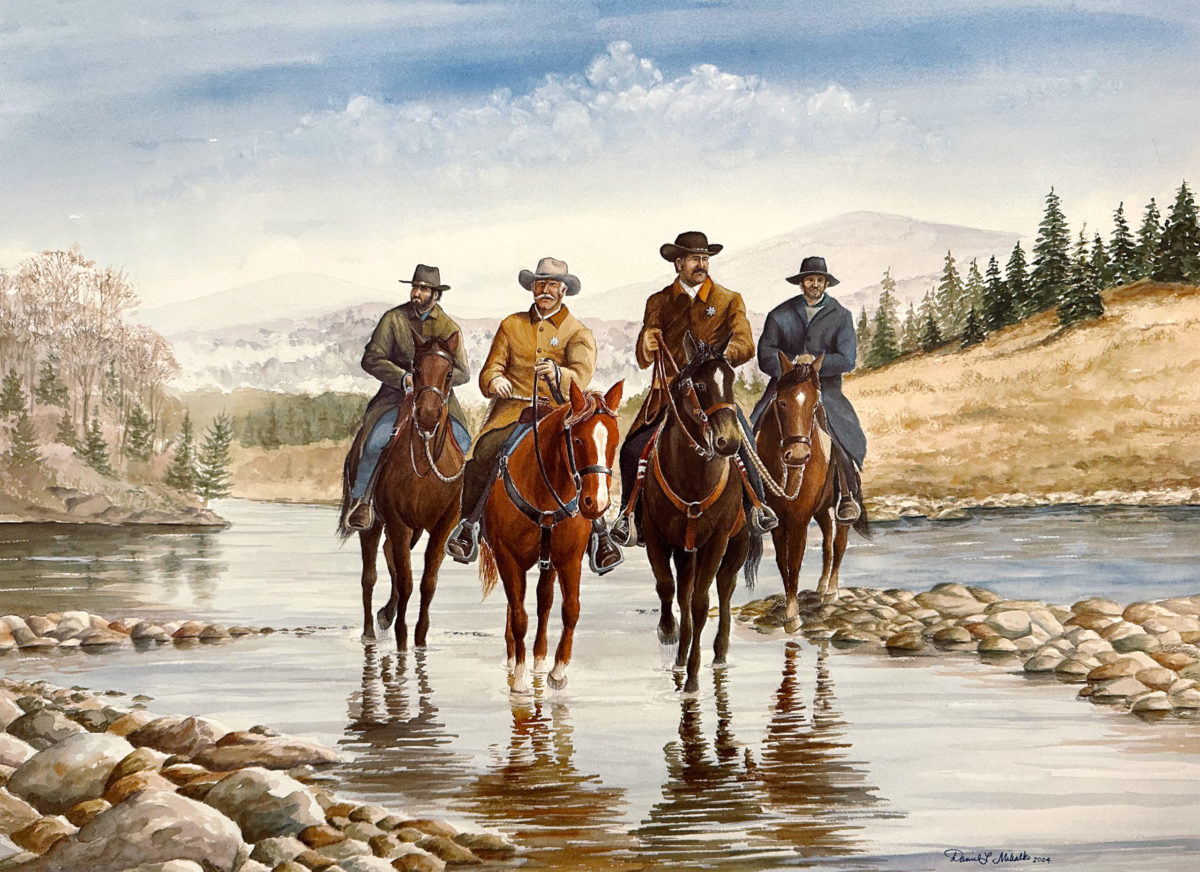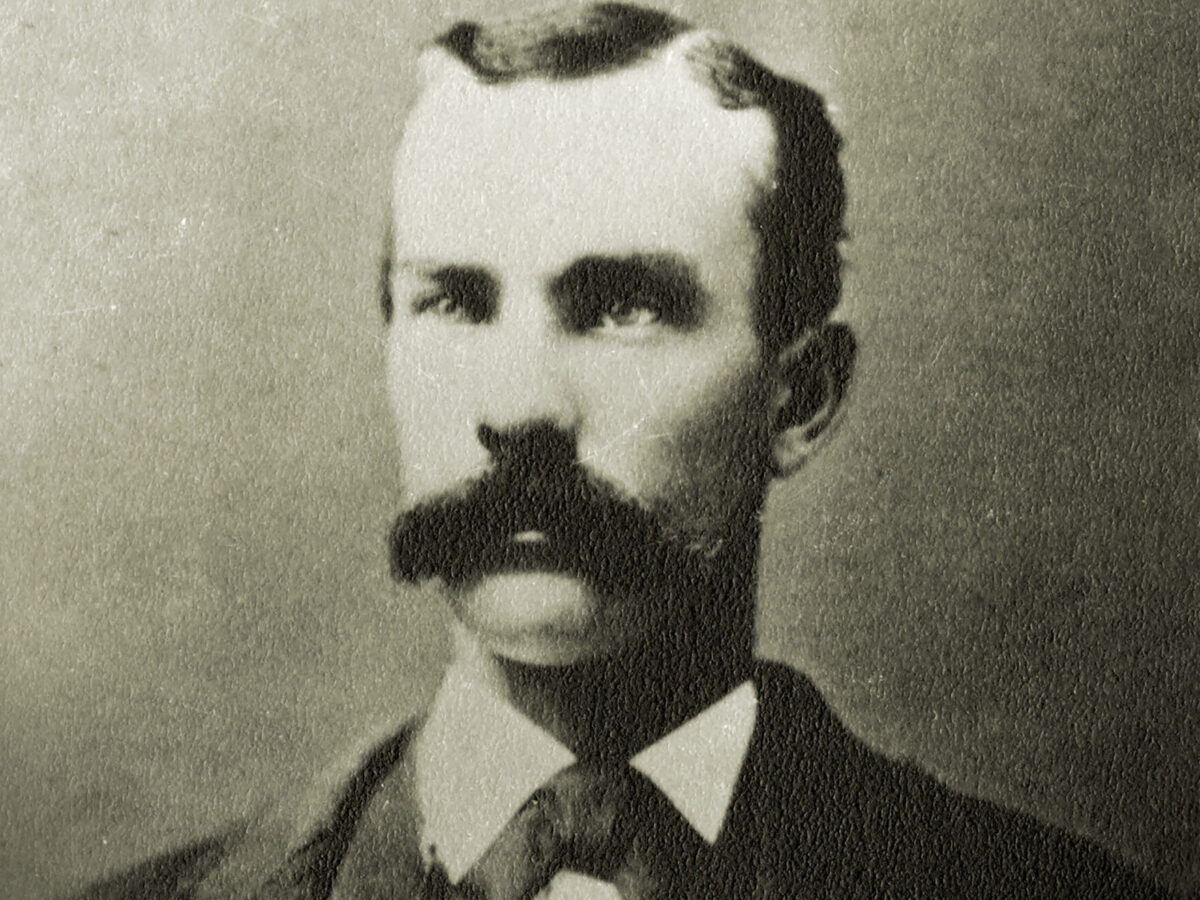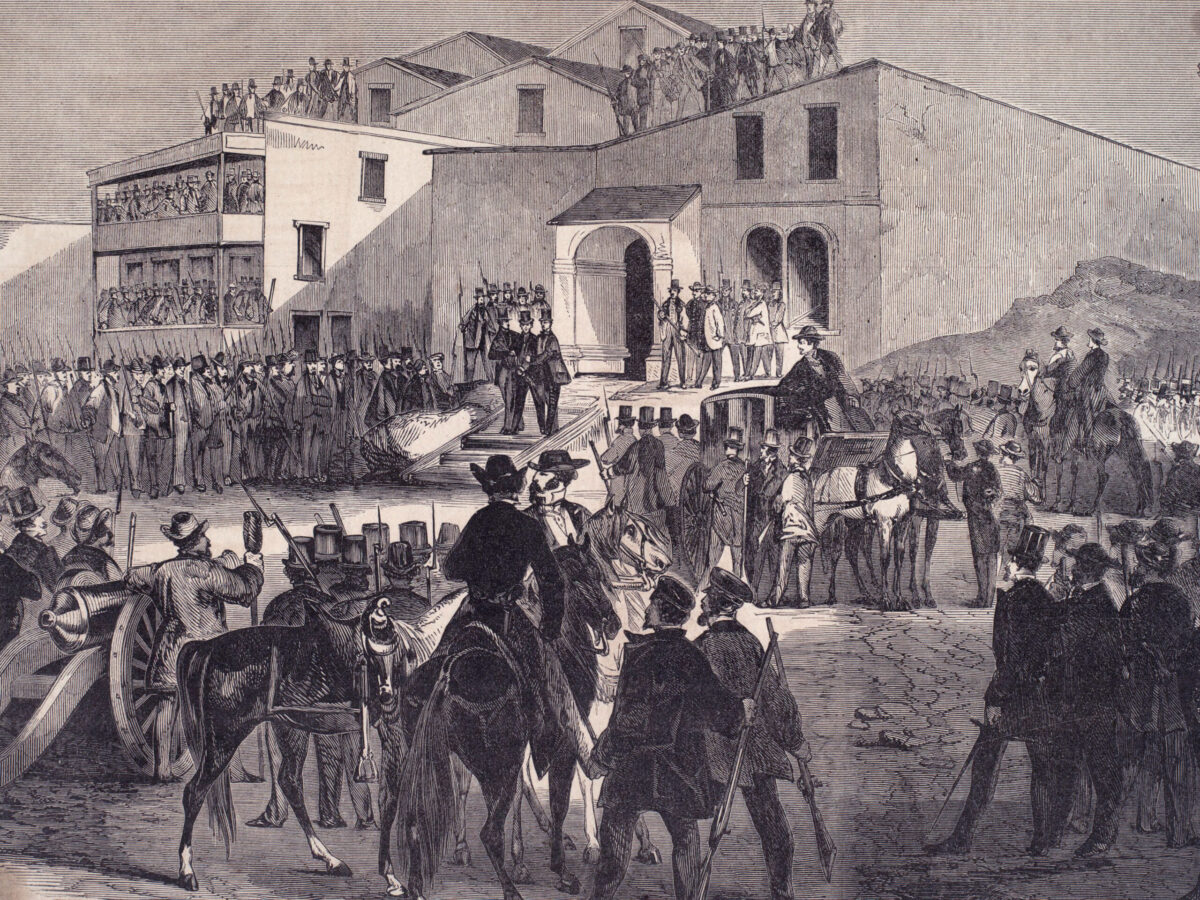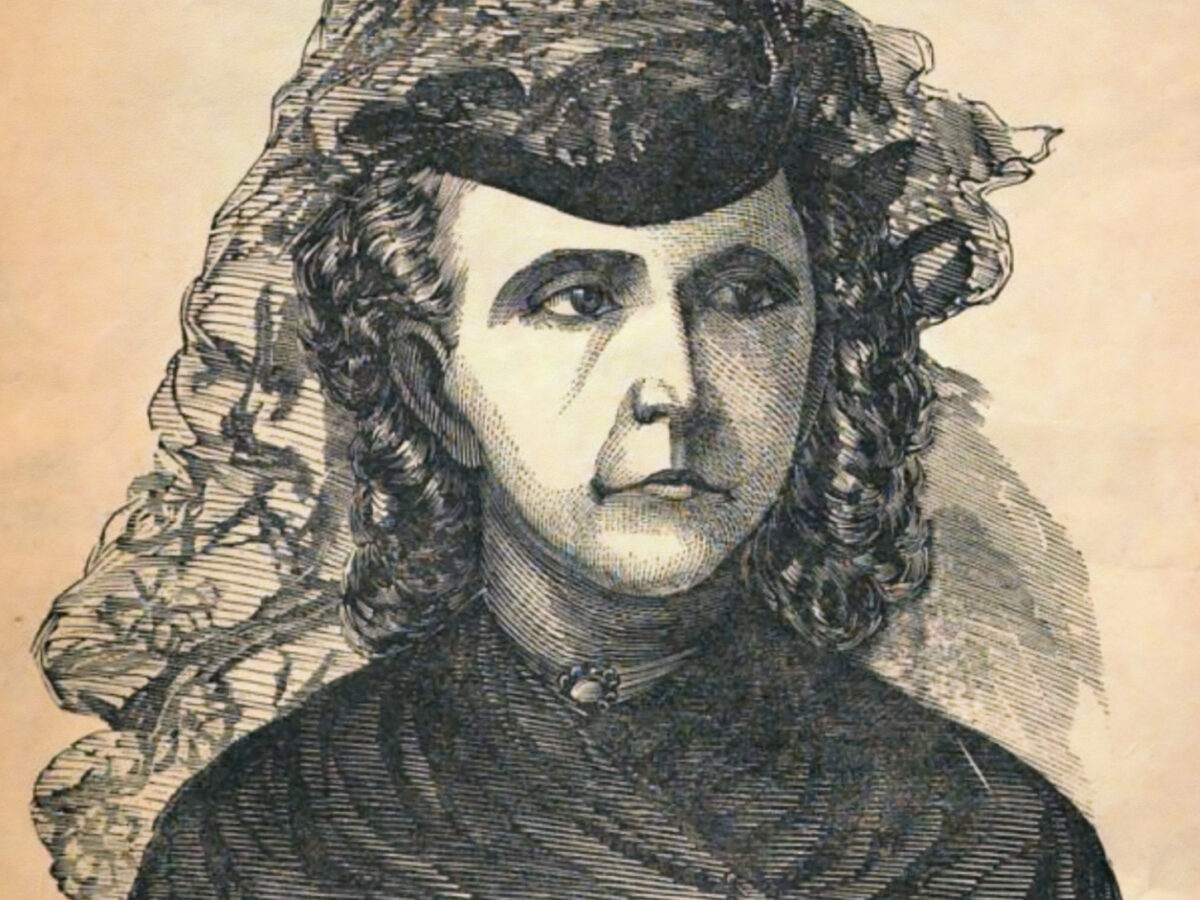New York Bar, a sandbar on the Snake River some 20 miles north of present-day Dayton, Wash., is a place of hauntingly stark geological formations carved during the ancient Missoula floods. The Snake winds west from its headwaters in Wyoming’s Yellowstone country through deep canyons across Idaho before flowing into the Columbia River in southeast Washington. Farming flourished along these waterways due to the ancient alluvial soil deposited by ice age floods. Bavarian-born Henry Villard (1835–1900) had a vision to transport wheat and other products from Washington Territory by river and rail, so he built a great warehouse and shipping station on the broad sandbar in northeastern Columbia County. It proved an ideal landing for riverboats offloading and taking on cargo. It was also the site of a notorious murder in 1882.
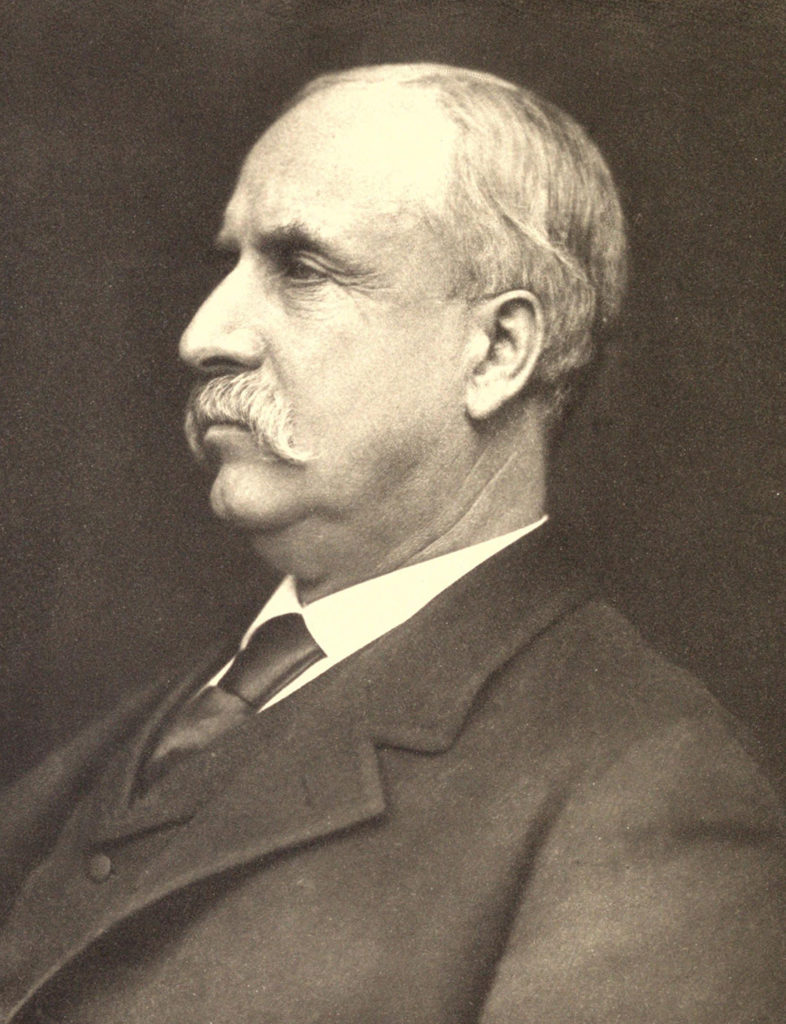
By that year Villard’s Oregon Railroad & Navigation Co. (OR&N) had completed construction of the warehouse and an attached one-room cabin for station agent Elijah H. Cummins. A Wisconsin native, Cummins had settled with his family just across the border in Oregon and since fallen in love with pretty widow Mary Shelton. He wanted to marry and advance with the OR&N, and the station agent job at New York Bar seemed like a good steppingstone for the ambitious young man.
Mrs. Iva Leland lived along the river a few miles from the bar. Around 2 a.m. on July 26 she woke to the sound of gunfire, peered out a window and saw figures in the distance riding along the riverbank. It was not unusual for sheepherders to fire shots to keep predators at bay. She returned to sleep unaware the gunshots heralded a gruesome crime.
Shocking Discovery
That morning freighters William Suttie and John Butterfield drove a wagon west from Pataha City to the station to pick up supplies. Arriving in the afternoon, they found the warehouse locked and station agent Cummins nowhere around. After calling out and getting no response, the tired freighters decided to sleep through the heat of the day. At 2 a.m. on July 27 they woke to the sound of a clock chiming in the station agent’s cabin.
Butterfield entered the cabin alone to a ghastly scene. Cummins lay dead upon his bed, the blankets sodden with blood. Near the woodstove lay an ax caked with blood, gore and human hair. Blows, presumably from the ax, had left gashes across the agent’s mouth and cheek and crushed in the crown of his skull. His killer or killers had also cut the agent’s throat with a knife and shot him six times. Cummins’ own pistol lay on the floor, unloaded and choked with sand. The empty holster hung on the wall behind the bed.
The motive was apparently robbery, as the agent’s coin purse lay empty on the floor, his currency purse lay open and empty on the table, and the cash drawer was open and also empty. Missing, it was later determined, were $1,500 in banknotes drawn from the First National Bank of Walla Walla and gold pieces Cummins was known to have kept in the cabin.
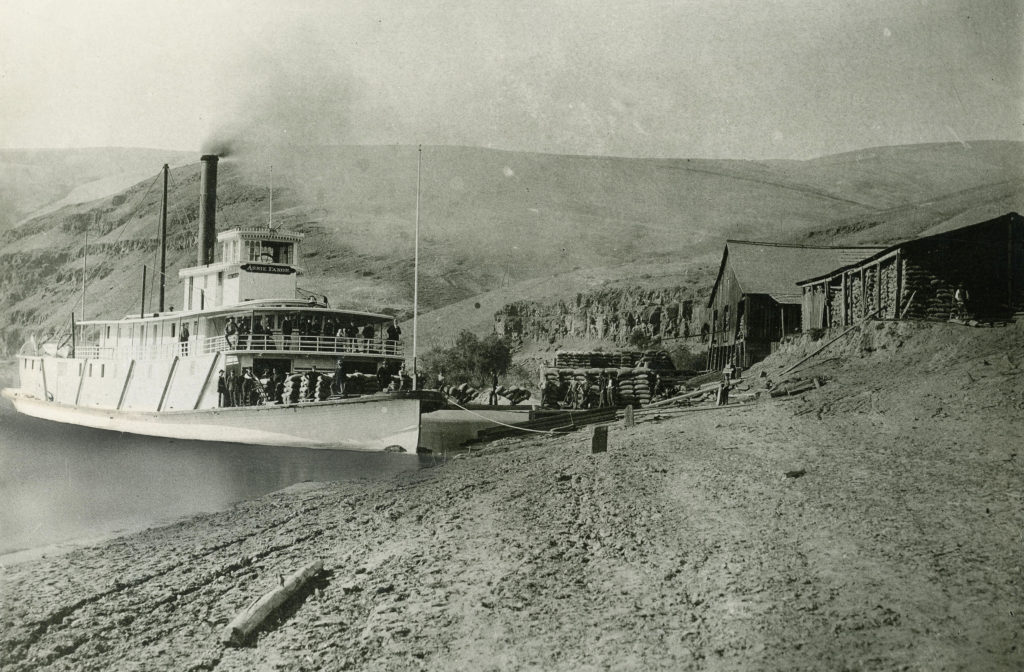
Butterfield ran from the cabin to alert Suttie, and the two hurried off to raise the alarm. Suttie, an adept telegrapher, sent an urgent call for help over the Western Union wire and concisely described the grisly murder scene. Columbia County Sheriff Jacob Hosler, who had just won election to the office, got word and no doubt wondered who could have committed such a heinous slaying.
The sheriff knew that 1882 was proving a rough year for growers. The records of farmers in Columbia and neighboring counties with severe debts, collections and forfeitures numbered in the hundreds. Most of these men were “brush farmers,” doing a little bit of everything to support their families. Wheat was usually a reliable cash crop, along with oats and barley. Good farmers could reap 40 bushels an acre. But stock market speculation had caused drastic losses in wheat markets, and wheat sales were off 30 percent from the previous year’s values.
Adding to farmers’ woes, Villard had recently raised his freight rates, making him and the station at New York Bar a topic of angry discussion among area growers. A farmer on the edge of losing everything just might consider robbery, even murder.
On July 27 a six-man coroner’s jury was impaneled, and Sheriff Hosler put up a reward of $500 for information leading to the identity of the felons. Local lawmen combed for clues at the murder scene, while railroad inspectors and investigators from Pinkerton’s National Detective Agency, hired by Villard, employed early forensics to gather evidence.
Early in the investigation authorities followed several false leads. While they arrested and questioned several parties, all were ultimately released. Finally, a welcome clue in late 1882 led to a suspect, one Canada Owenby, who lived near Pomeroy. A local sheepherder had reported seeing two riders in the vicinity of the station on the night of the murder and described one of the mounts as a mule. A blacksmith in Pomeroy told investigators Owenby’s horse wore ear netting to deter sand flies. Such covers would make its ears appear larger and taller, thus the sheepherder could have mistaken Owenby’s horse for a mule in the darkness. The same blacksmith had changed the shoes on Owenby’s horse after the murder and cleared what he believed was sand from New York Bar from its hooves. Based on that evidence, authorities arrested Owenby. His own behavior spoke to his guilt. Though jailers had shackled the suspect’s hands, he broke free during his arraignment and tried jumping from a second-story window but was quickly subdued. Owenby then offered bribes to his jailers and cellmates to either let him escape or provide false testimony.
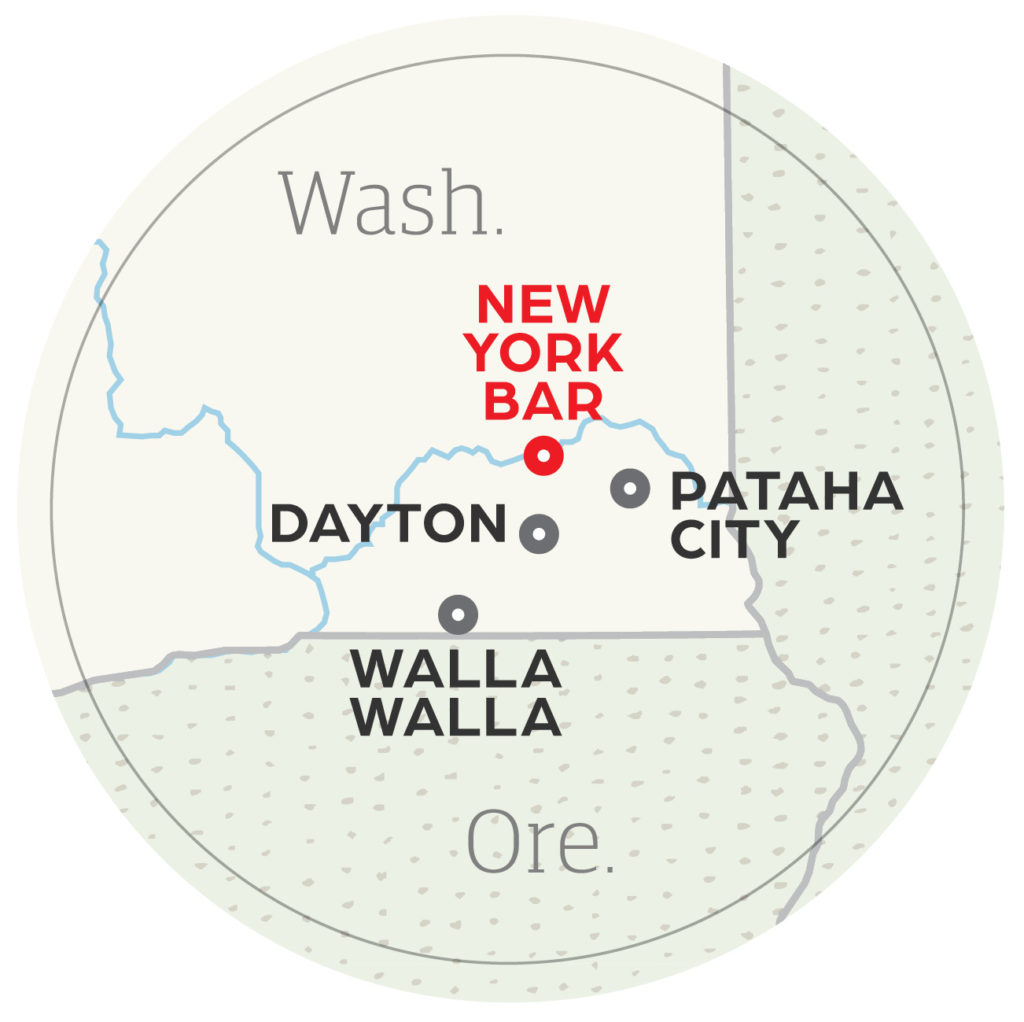
More damning evidence surfaced at his trial, which convened in Dayton, the Columbia County seat, on Wednesday, Jan. 10, 1883. For one, there was literally a smoking gun. Cummins had been shot with a .32-caliber revolver. In the wake of the murder Owenby had purchased .32-caliber bullets from a Garfield County merchant using banknotes from the First National Bank of Walla Walla, the same type of currency missing from the murder scene. Finally, a physician testified to having retrieved human blood from a shirt found at Owenby’s home. Given the case on the evening of Saturday, January 13, the jury deliberated for 23 hours and still could not reach a consensus.
Soon after the jury adjourned that evening, however, Owenby made a startling confession to a fellow inmate. The inmate told the jailer, who informed the sheriff, who in turn summoned the clerk of the court. That evening, in the presence of witnesses, Owenby confessed that he, James T. McPherson and Ezra Snodderly had conspired to rob and kill agent Cummins.
Confession and Consequences
Owenby scribbled out a graphic written confession of the murder at New York Bar:
“McPherson and I left his house about 10 o’clock [on July 25], and we went to New York Bar. Between 1 and 2 o’clock [on July 26] we reached the bar. I remained a little ways behind McPherson when he approached the house, because Cummins had a dog that did not know me. McPherson made friends with the dog and walked up to the house. When McPherson entered the house, I was about 30 yards behind him. McPherson pushed his finger through a hole in the door and raised the latch, then opened the door and commenced firing at Cummins on the bed. McPherson fired five shots. At the first shot Cummins cried out, but I do not know what he said. McPherson continued firing until he emptied the five chambers of his pistol and then stepped back from the door. Cummins then came to the door and closed it. I think I then heard Cummins say something about ‘water,’ and I think he took a drink, but I am not positive. McPherson fired very rapidly. After Cummins closed the door, McPherson found an ax near the house and with it broke in the door. When he struck the door, a knot flew out of it. No shooting was done through the knothole. When the door flew open, I was right behind McPherson, and Cummins recognized McPherson and said, ‘Mack, what in the world have I done to you?’ McPherson answered Cummins and said, ‘Nothing, G_d d__n you; I’ll finish you!’
“About the same time I commenced firing and fired three shots, when Cummins fell to the floor. We, McPherson and I, picked him up and laid him on the bed, and I immediately went out of the room. Just as I commenced firing, Cummins cried out, ‘My God! Don’t murder me!’ I was not in the house after placing Cummins on the bed. McPherson used the knife and the ax after I left the room. He also covered up Cummins and placed a cover over the window while I was outside the building watching. While I was outside, McPherson got the money and kept it all, with the exception of $50, which he gave me at the time, until I came from the mountains a week from the next Saturday, when I met him at McBride’s on my return from the mountains, where he gave me $550. We took from the cabin the shot sack that contained all of the money—McPherson having put the greenbacks in the sack which he took (the greenbacks) from a pocketbook, leaving the pocketbook on the floor. We then immediately left the cabin and rode up the main road.”
On Sunday, January 14, even as the jury continued its deliberations, warrants were issued for the arrest of Owenby’s accomplices, McPherson and Snodderly (who on the night of the murder had gotten tied up with threshing on the ranch where he was working and had not taken part in the crime). Authorities promptly rounded up the pair and brought them to Dayton for trial. All three suspects were tried separately that summer and convicted of murder. Snodderly and McPherson were sentenced to hang, the date set for August 7. Owenby’s sentencing was delayed.
The public was already fired up over the murder. When word spread in early August that McPherson’s attorneys had procured a reprieve from Washington Territory Governor William A. Newell and a retrial for their client, the monthslong delay didn’t sit well with many Daytonians. On the evening of August 4 incensed locals began to gather, eventually coalescing into a mob of some 65 well-armed men. Around 10:30 p.m. they marched to the jail and demanded entrance. Hoping to disperse the mob, the half dozen guards inside each fired a warning shot. Undeterred, the vigilantes used crowbars to force their way inside. The jailers had time to hide their keys, but the mob simply pried the door from McPherson’s cell. Using files to remove his shackles, they bound his hands behind his back and marched him barefoot to the execution grounds.
As McPherson reached the top step of the unfinished scaffold meant for Snodderly, he turned to the mob and said, “Fellows, I am an innocent man, and God knows it, and I die game.” They were all too happy to accommodate him. Placing McPherson beneath the crossbeam, the designated executioner cinched a half-inch rope noose around the condemned man’s neck. No trapdoor would spring open beneath McPherson. Instead, the executioner tossed the rope over the beam and threw the loose end down to the mob, which hoisted McPherson until his legs dangled 2 feet above the platform. The body swung to and fro, twisting with the rope. Someone hung a lantern close to McPherson’s face so those gathered below could better watch his slow strangulation, which lasted 20 minutes.
Sheriff Hosler had been out of town. As he returned on horseback down Dayton’s main street, he was shocked at the sight of the lynching. Dismounting, he rushed to the scaffold to find McPherson had already died.
Three days later Snodderly was scheduled to walk the same path as McPherson, and officials feared further interference by the vigilantes. So, they promptly summoned a coroner’s jury, which determined “McPherson came to his death by hanging and strangulation, the person or persons causing his death being unknown.” Those unknown, some of whom Sheriff Hosler doubtless recognized, mask or no mask, returned to their homes, places of worship and fraternal organizations.
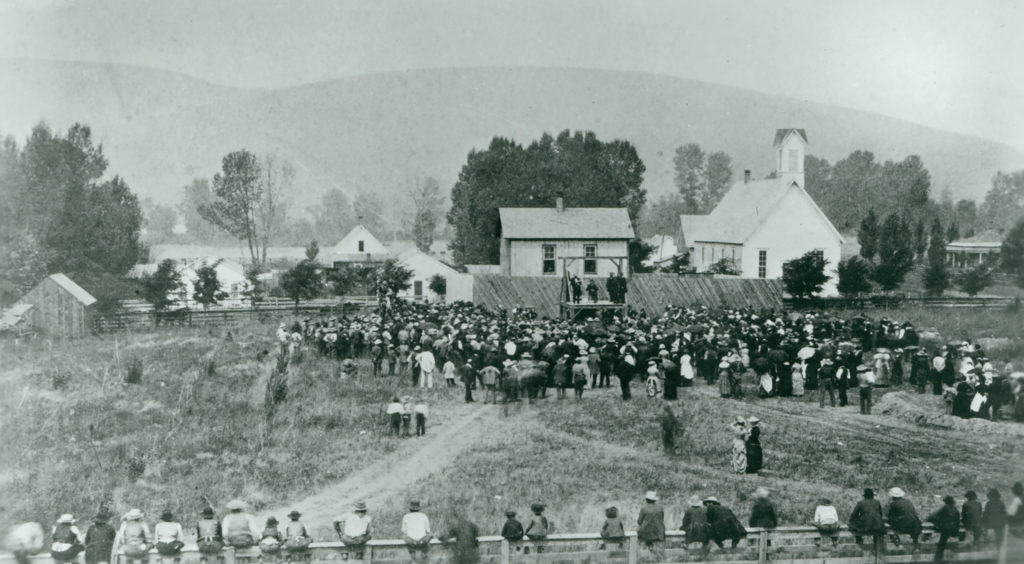
On August 7 the citizenry, including many of the same men, gathered around the finished scaffold to watch Snodderly’s lawful execution. To ensure no further breach of protocol, Hosler summoned 100 men under the command of territorial militia Colonel George Hunter to form a perimeter around execution ground.
Shortly before noon Snodderly took his place atop the gallows. After kneeling before a chaplain for a short prayer, he stood, was bound, then turned to address the throng of spectators. “Gentlemen,” he protested, “I die innocent.” After slipping a black hood over the condemned man’s head, the executioner sprung the trap, and the snap of the noose broke Snodderly’s neck. Death was instantaneous.
A Daring Escape
Of the trio who’d conspired to murder station agent Eli Cummins, only Owenby remained unpunished, though he freely professed his guilt and expressed a wish to be hanged. A chance encounter with another condemned man almost cheated justice.
On Oct. 27, 1883, patrons of Dan Haggerty’s saloon in Prescott, Wash., some 15 miles west of Dayton, witnessed the owner’s senseless murder. Gambler John Elfus frequented the place and liked to throw the dice. Down on his luck that night, Elfus loudly complained that a fellow roller owed him 50 cents and wouldn’t pay up. When he refused to quiet down, Haggerty had his barkeep eject Elfus. Minutes later the gambler returned, threatening to kill the man who owed him money. Once again Haggerty had him tossed out. Fifteen minutes later Elfus reappeared outside the bar, aimed a rifle through a window and shot Haggerty in the neck, killing the latter instantly. Fleeing the murder scene, Elfus hitched a ride to Walla Walla with an unsuspecting wagoner. A constable from Prescott formed a posse and took off in pursuit, apprehended Elfus and took him to the Walla Walla County Jail.
Judge Samuel C. Wingard, the same jurist who had pronounced sentence on McPherson, Snodderly and Owenby, presided over Elfus’ trial in Colfax, Washington Territory, which also ended in conviction. Wingard sentenced Elfus to death by hanging and scheduled his execution for Jan. 15, 1884. The condemned showed little concern at the verdict, as he’d conceived a plan to escape the noose. All he needed was an accomplice.
Meanwhile, to forestall another lynching, authorities in Dayton transferred Owenby from the Columbia County Jail to the Walla Walla County Jail. There he met his cellmate, Elfus. The felons chose Christmas Day 1883 to put the latter’s escape plan into action. That evening, as Sheriff James B. Thompson made his rounds, Owenby and Elfus used bricks pried from their cell wall to stun and then overpower the lawman. The pair then threw the sheriff into the cell they had occupied and locked him in. When the jailer came running to Thompson’s defense, the prisoners turned on him with a pocketknife and sliced the man’s throat from ear to ear, barely missing his jugular vein. Both lawmen survived their grievous wounds. The jailbreakers then stole two horses from the stable of Congressman Thomas Hurley Brents’ groom and rode away.
Within hours a 14-man posse left Walla Walla with instructions to bring back the escaped killers, dead or alive. The next day they learned the fugitives had crossed the border to Cold Springs, Ore., where they’d left their exhausted horses, stolen two more and killed a Chinese man, robbing the body of $140.
Recommended for you
On the afternoon of Jan. 2, 1884, Dayton Police Chief Andrew William Robinson received a telegram from the nearby Oregon border town of Milton (present-day Milton-Freewater). “Come to Milton immediately,” it read. “We have Owenby.” Robinson immediately set out southwest on horseback into a blizzard. On arrival in Milton, the chief learned that a farmer’s young son had spotted a man crawling around inside their barn north of town, and the family had welcomed him into their house, assuming he was an unfortunate tramp. To be safe, the farmer also sent word to local authorities. A responding deputy found Owenby, starving and frostbitten from his weeklong exposure. Robinson returned the fugitive to Dayton, where Owenby died six days later in the by then familiar Columbia County Jail.
With that, the third of Cummins’ killers had breathed his last.
On the day of Owenby’s capture, authorities in Milton also caught up to Elfus, who was returned in shackles to the Walla Walla County Jail. This time there would be no reprieve from Governor Newell. The condemned remained composed during preparations for his execution on January 15. Before entering an enclosure that screened the scaffold from public view, he called out to curious onlookers, “Goodbye, boys!” On mounting the gallows, he addressed the small party of witnesses. “I have not much to say,” he said. “I am guilty and will be hanged.” Bizarrely, he also claimed an inner voice had warned him not to shoot saloon owner Haggerty. “If you do the deed,” Elfus said the voice warned, “you will go down there.”
As Sheriff Thompson placed a black hood over Elfus’ head, the condemned asked forgiveness for having assaulted the sheriff during the Christmas Day jailbreak with Owenby. “I hope you don’t blame me,” he said. “All I wanted was to get away.” The sheriff nodded. Then Thompson sprung the trap, Elfus fell and the noose snapped his neck. Twelve minutes later his heart stopped beating. So ended the life of a man who’d killed over a petty 50-cent disagreement.
By then Villard’s fortunes had waned. Having spent more than anticipated on his rail network to the Pacific, he went into financial collapse and was forced to resign the presidency of the Northern Pacific Railroad. The Jan. 5, 1884, edition of Dayton’s Columbia Chronicle noted he was suffering from nervous prostration. A few years later, with backing from German capitalists, a resurgent Villard would again secure the directorship of the Northern Pacific.
Eli Cummins was buried near his station on New York Bar, and Mary Shelton was known to visit his grave. She never remarried. In 1966, when water levels rose on the Snake River during construction of the Lower Monumental Dam, officials reinterred his remains in a plot in the Dayton City Cemetery.
Unlike Villard, Walla Walla banker Levi Ankeny went to great lengths to keep his farm customers afloat, even leveraging his personal assets. In the wake of Owenby’s death he wrote, “Thus the tragedy of New York Bar was closed, and it was a clean sweep for justice.”
For further reading on the topic author Kevin Loren Carson recommends Legal Execution in the Western Territories, 1847–1911, by R. Michael Wilson; Lyman’s History of Old Walla Walla County, by William Denison Lyman; and An Illustrated History of Southeastern Washington, by Frederic Ambrose Shaver.

